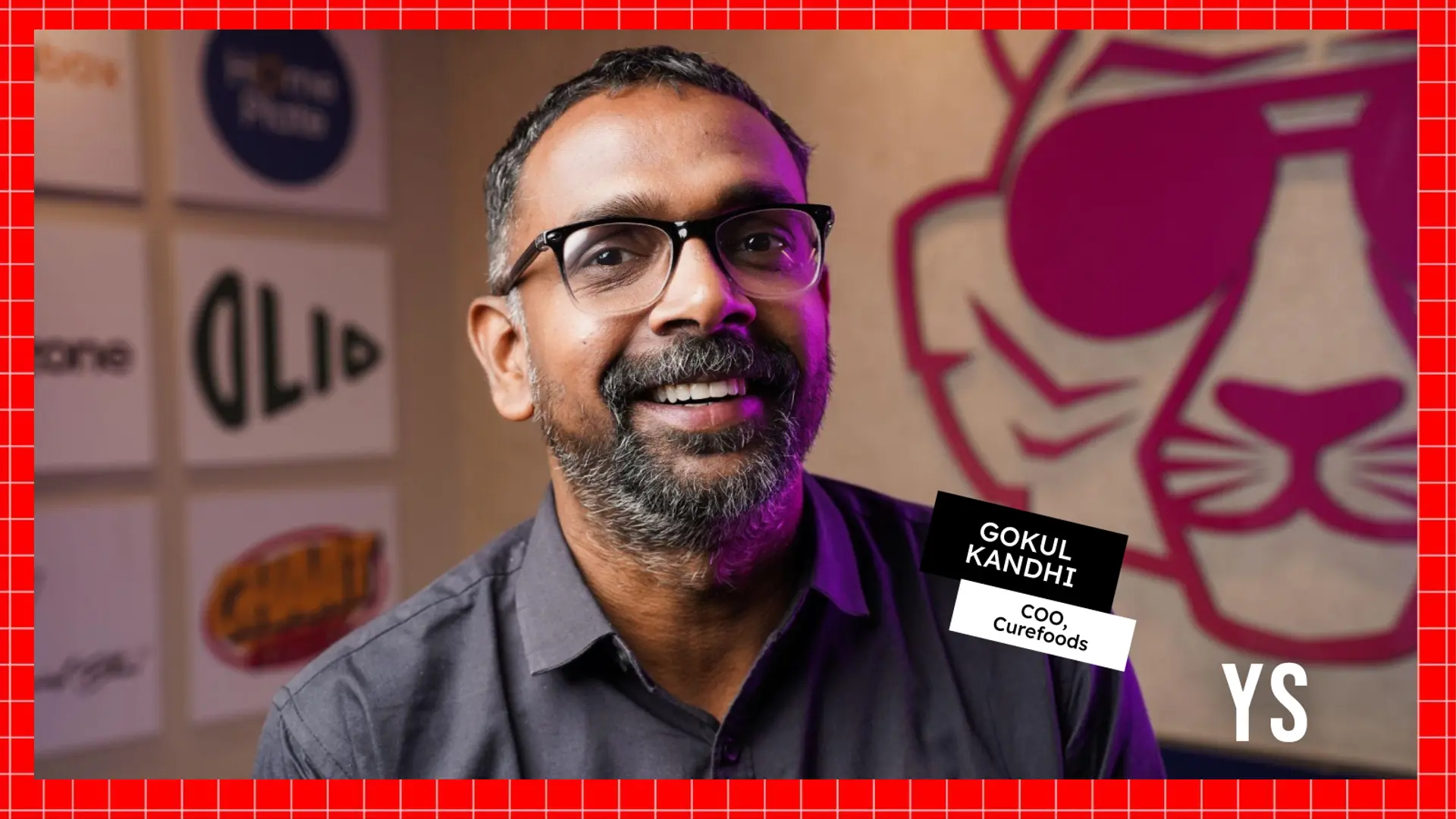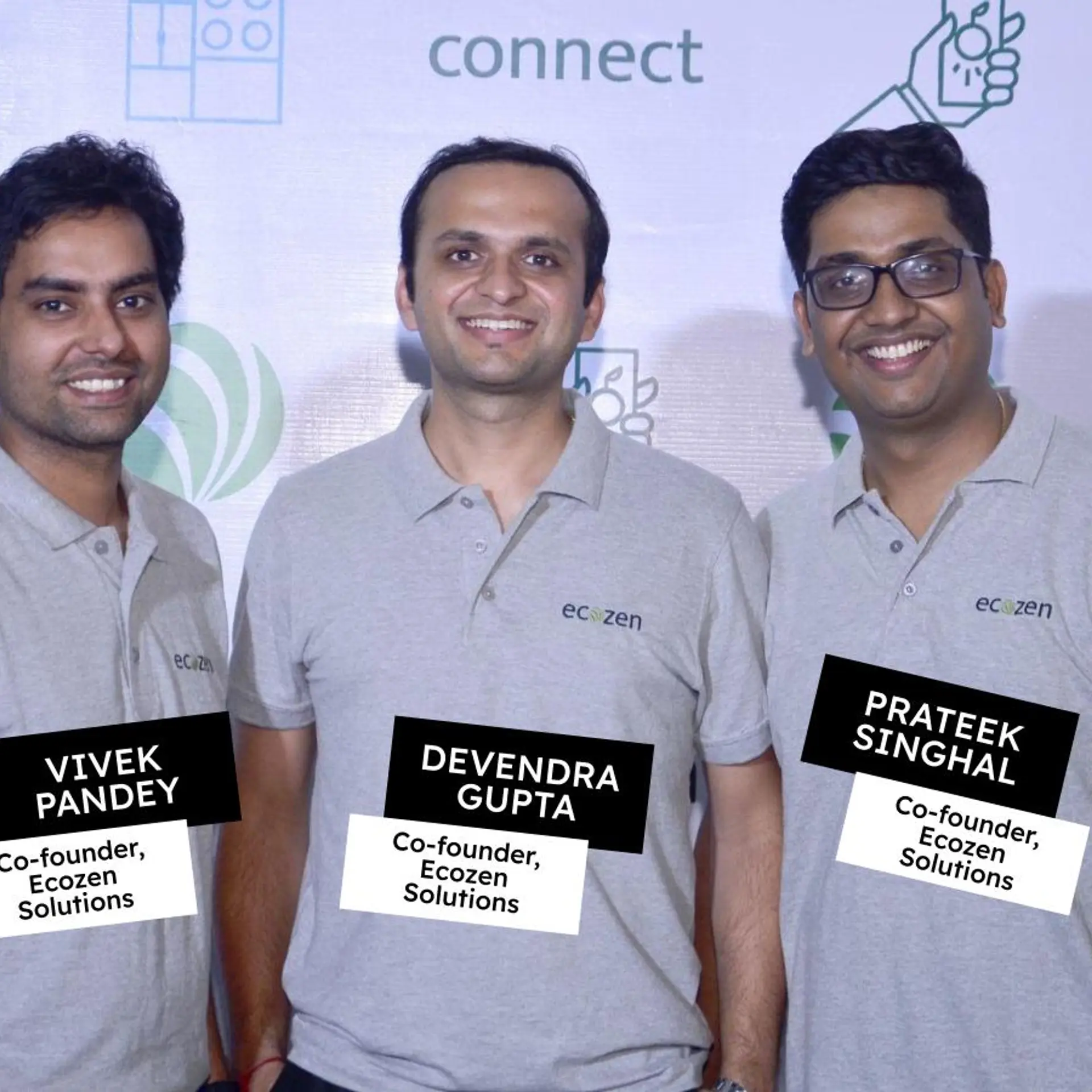What makes CRED a stunningly designed app? The secret to building inspiring products revealed
At YourStory’s Future of Work conference, Harish Sivaramakrishnan, Chief Design Officer at CRED, busted more than a few myths about UX, design, beauty, and trust when it comes to building a successful product.
Until recently, Harish Sivaramakrishnan was best known as the ”rockstar techie”. Frontman for the Carnatic progressive rock band Agam, Harish has also worked with Adobe, Myntra, Freecharge, and Google. Today, however, he is best known as the man behind the stunningly elegant design of the credit card payment-rewards app that’s been making waves in the two months since it was launched.
No wonder then that the Chief Design Officer at CRED spoke to a packed house at YourStory’s Future of Work conference last Saturday. The topic? Shunning the 99 percent to design for the 1 percent – peppered with instances of how these principles are put to work at CRED, widely acknowledged as one of the most elegantly designed apps in recent times. Here are some key takeaways.

Harish Sivaramakrishnan, Chief Design Officer at CRED, speaks at YourStory's Future of Work conference.
Everyone loves the small joys in life
CRED’s design had to achieve two goals: ensure an efficient payment system and create an incentivisation layer. Once they realised that they couldn’t build for efficiency alone, they also realised that the small joys in life make a big difference.
“Everybody likes to have that small moment of joy. Everybody likes to be made to feel special in small little ways,” he said, adding that all their research while building CRED proved one thing over and over:
“Whoever you are, if you are given a small moment of joy, you appreciate it, you reciprocate it, and you feel nice about it.”
So when they built CRED’s onboarding flow (typically the most boring part of any product), everything about it stemmed from that metaphor. It helped them optimise the number of steps and have the right set of interventions. “The right set of interventions comes from a combination of what is measurable and what is emotional. There are certain things we cannot take the emotion away from a human being just because there are more efficient systems available,” Harish pointed out.
Another lesson learned while designing CRED was that the joy a person derives from achieving a goal is just as important as their ability to achieve that goal. “Many times, when we are designing software, we forget about the joy. The problem is we have become so data-oriented and so measured in everything that … we don't actually think about the real human beings using it. You are not building software for a bot. Bots don’t display emotion, human beings do,” he explained.
And so, if your app helps the user achieve their goal but does not let them have a good time achieving it, you have a product that works, not a product that’s great or inspiring.
Beauty is not subjective
“I don’t think beauty is subjective,” stated Harish, and acknowledged that it was a controversial enough statement. “Every designer I have spoken to says beauty is subjective. What's beautiful for you is not beautiful for me. But in my opinion, that's a bloody terrible reason to not make things beautiful. Just because something is subjective, not doing it is a bad idea. The whole idea of saying beauty is binary-subjective is wrong.”
And this belief drives a key guiding principle at CRED. “One core principle at CRED is that our visual design has to be bloody great. The first person hired in the CRED design team was a visual designer. The second person hired was a motion designer. As a principle, CRED does not hire people that don't do visuals. CRED as a company has this as a core principle.”
How do you measure the impact of something beautiful?
It’s a question that is hotly debated among product managers: can you even measure the impact of something beautiful? This, said Harish, is where we falter.
“You don't measure design efficiency by breaking it into its components…you can’t just take off an illustration and try to measure how it helped,” he asserted. When you do that, you end up ignoring the fact that human beings think emotionally and end up building products that have “zero inspiration”. It’s what happens with a majority of products - they do the job, but they don't inspire. “And for me, a product needs to inspire.”
You can’t build ugly and beautify later
For Harish, anyone who believes it’s okay to build ugly and beautify later does not understand design, the product, or even the customer.
“This is the worst thing you can ever say. There is no such thing called designing ugly,” he stated.
While it is acceptable to have parameters for your abilities, it is not acceptable to say that those limited abilities are good enough.
“This is a subtle but important difference. Shipping ugly is a bad idea. It was a bad idea in 2010. It's a bad idea in 2019. If anybody tells you that, remember to run away from that person,” he warned, adding that as much as possible, ship only pixel-perfect. To make his point, he talked about how Adobe once delayed a release of Photoshop by six months because the dial wasn’t right.
Measure everything (and know how to measure it)
“Even in something like design, it is bloody important to measure everything so that you know how things are working,” Harish pointed out, adding that the problem arises when we think of measurement in purely mathematical terms.
Measurement, he said, was a combination of quantitative, qualitative and emotional signals. “Taking decisions based only on data will never give you an inspiring product - that's called monkey patching!” he added.
A lot of very hard-to-measure things contribute to measurable success and, as someone building a product, you have to understand why your product is not working despite the design and the tech looking fine. “It’s probably because you haven't taken into account the nuances that normal quantitative methods cannot measure. Perception, for instance, cannot be measured using quantitative methods,” he explained.
Perception quite likely played a large role in CRED’s initial acceptance. Comparing it with his time at Freecharge, Harish recalled, “The day we launched (CRED) people made large ticket size transactions. When I was working on Freecharge, people would put in Rs 5, not even Rs 10, because they were not sure. But when we launched CRED, there was a Rs 1 lakh transaction that went through the first day.”
Harish also shared a few more points about design that product managers would find helpful.
- For one, remember that good design is always beautiful, and good design always augments (it never takes away something).
- Don't be afraid to build unfamiliar patterns because all familiar patterns started as unfamiliar ones.
- Use research to understand the leading indicators. But please don't be enslaved by what your researcher tells you, because there is no way a researcher can speak to the whole universe to give you a quantifiable answer.
- Make some mistakes but ensure it's a new one every time.
His parting words referred to what CRED is and always will be. “We'll always be functional, efficient and beautiful. All three are non-negotiable. You should be too.’







